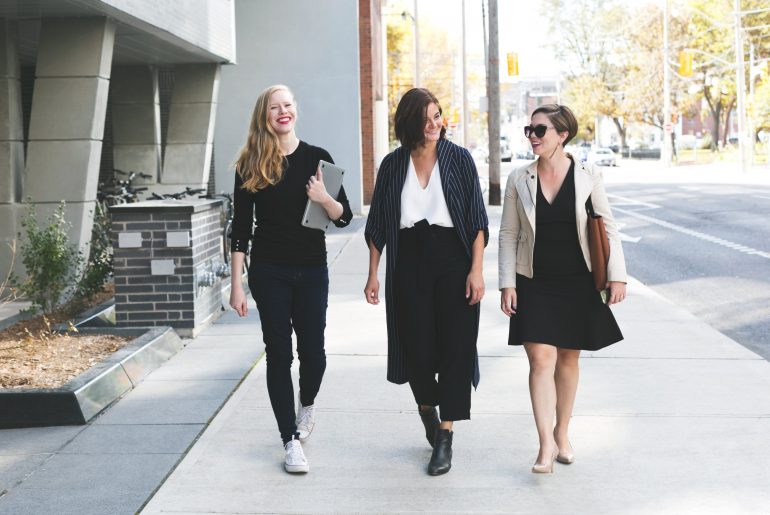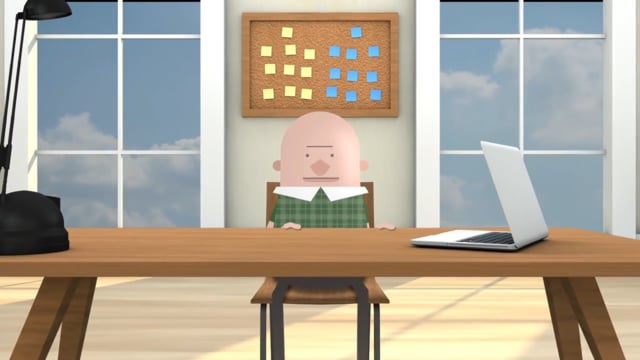One of the biggest problems from working at home can be inactivity. There’s no walking to get a cup of coffee, visiting a nearby colleague, taking the stairs to the bathroom or those incidental types of activity that come from being in a workplace with people and areas spread out. Everything is within easy reach at home. Couple that with a busy workload and this can mean sitting for as long as possible until the task is done. Suddenly hours have gone by and we’re still sitting hunched over the desk. Remaining in one posture for hours at a time can affect the muscles in your back, neck, hip flexors, hamstrings and calves. Excessive sitting can affect your metabolism, increase blood pressure, blood sugar and cholesterol – and that’s just the tip of the iceberg! Staying active when working from home may seem easy. Without the daily commute and perhaps having more flexibility in your working hours, surely being at home affords you more time to spend on exercise? Whilst this may be true in theory, we may quickly fall into routines that do not prioritise healthy activity and the boundaries between work and personal life become blurred. The best…
Get the Commonwealth Standing
I was perusing the British movement blog Get Britain Standing when I came across their solutions page. Get Britain Standing is a resource for employers much like Australia’s BeUpstanding, which focuses on a healthier Britain by reducing the prolonged hours of sitting that accompany many jobs. Their upcoming nationwide event On Your Feet Britain is set for April 24th 2020 with a reported ~2 million office workers participating. Get Britain Standing accounts that Briton’s working hours contribute ~70% of the daily sedentary health burden. Dr. Stuart Biddle, a professor of Active Living and Public Health is quoted on their website acknowledging the growing body of evidence that to be healthy we must move dynamically throughout the day. Which leads me to what excited me about their Solutions page: the balance board section! The benefit being, as long as you don’t fall off, strengthening your balance and your core muscles at your standing desk. They come in a variety of styles from the simple sea-saw, the log roll, and even the expert level half dome or as I like to call it the danger dome! (see image) Maybe don’t tell HR about the nickname when you bring one to the office.…
How Can Using a Standing Desk Affect Your Productivity
This article is re-posted from a Sedentary Behaviour Research Network blog post on 3rd July 2019. Recently, research into the topic of excessive sitting, or “sedentary behaviour”, has been making headlines. The risk for chronic diseases, such as diabetes and obesity, that comes with high levels of sitting is becoming more evident (1). Office workers represent a population that spend a significant amount of time in sedentary pursuits as a consequence of their occupation (2). As more research is being published on the topic, many workplaces are seeking non-sedentary alternatives and solutions to the traditional office environment to keep their employees as healthy and productive as possible. One such solution has been the implementation of activity-permissive workstations. Activity-permissive, or alternative, workstations replace a worker’s traditional desk and are broadly categorized into either standing desks or dynamic workstations. Standing desks allow for a worker to stand while performing a task (e.g., typing, clerical work), and can be installed as additions to an existing workstation, or as height-adjustable replacement units (see Figure 1). Dynamic workstations are designed to allow for activity or movement while working, and include a variety of alternative workstations, such as: treadmill desks, cycling desks, and dynamic sitting desks…
Six Strategies For Sitting Less
Six Strategies for Sitting Less Scratching your head on how your team can BeUpstanding? A recent study by Hadgraft and colleagues and published in the journal BMC Public Health, explored office workers attitudes around reducing workplace sitting. They also sought out workers opinions on a variety of strategies aimed at reducing occupational sitting, which were commonly identified from previous workplace interventions, and their perceived barriers to achieving this in the workplace. A number of strategies were viewed as acceptable and likely to be adopted by workers with some of the strategies addressing multiple influences on sitting and catering to a range of different jobs and preferences. Why not give some of the strategies a try in your workplace! Make use of standing meeting. Sick of sitting through endless meetings? Look to change it up by changing your posture. A standing meeting can be used for a quick check in with the team, while putting stand and stretch breaks into the agenda can help your team reset and refocus. Why not step it up by having a walking meeting for those one-on-one catch ups! Communicating face-to-face. Whenever there’s a short message to be conveyed to a co-worker, employees can tell the…
Why Sitting Is Bad For You – An Animated Explanation
This TEDEd talk provides some great visuals of why we are supporting workers to BeUpstanding
Quick Tip – Water Bottle Replacement
Are you looking for ways to move more at work? Here’s one of our favourite tips to get you out of your seat and onto your feet. Replace your water bottle with a glass! This simple strategy forces you to stand up and walk to fill your glass every time it is empty. In addition, this is helpful because it helps remind you to drink enough water which is also important for your health. The most sustainable strategies are sometimes ones that will easily become part of your daily routine. An empty glass on your desk is a subtle reminder to stand up often. We hope this simple tip will have you up and moving about without even thinking about it. Happy moving!






